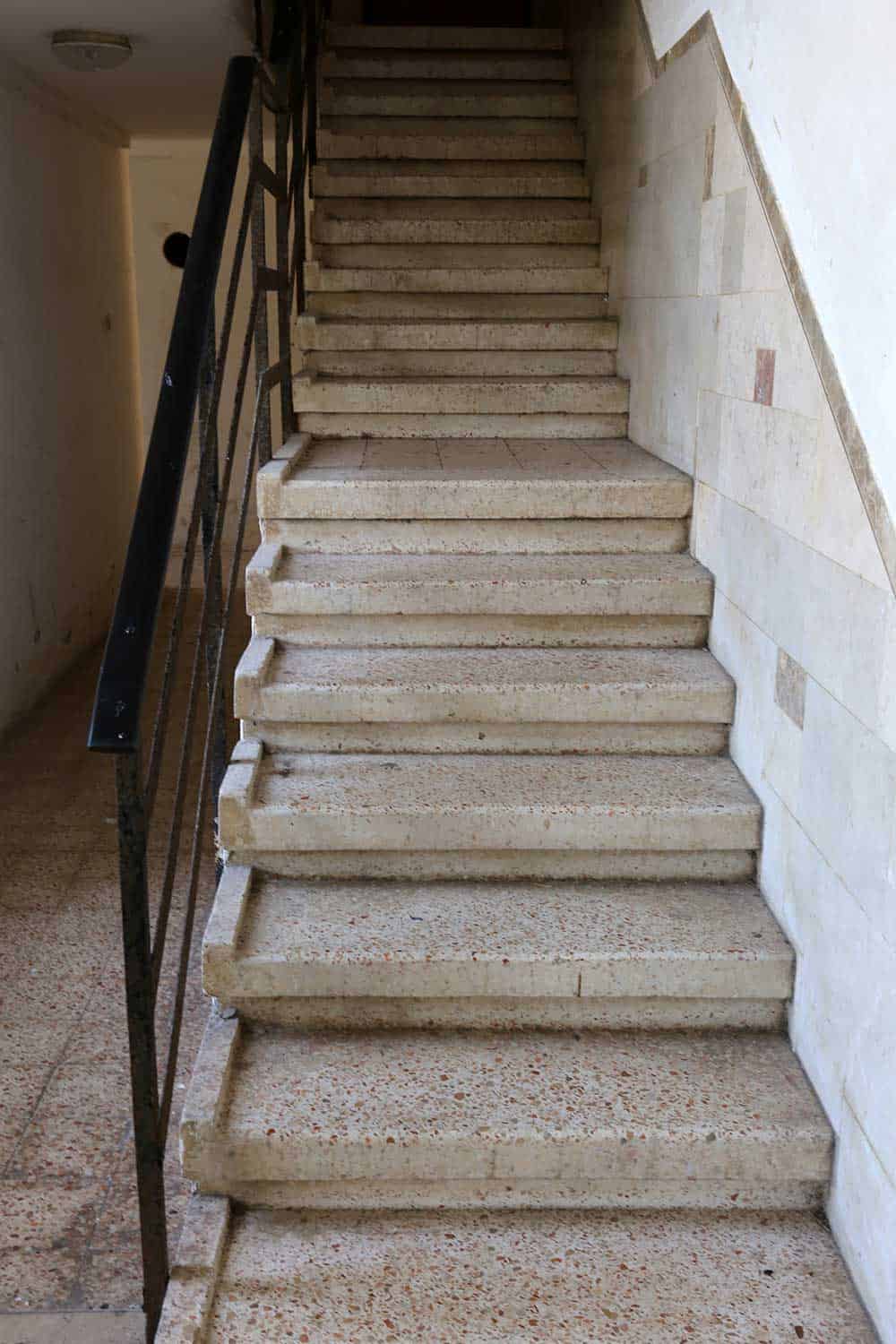You can find stairs in almost any residence, and you probably don’t think much about their dimensions when you use them. However, if you’re building your own home or doing some remodeling, you might wonder if there are any building codes or best practices to heed when you decide your stairs’ width. We have researched this to help you get the information that you need!
Excluding handrails, the minimum width for stairs is 36” according to most building codes. Handrails can’t extend inward more than 4.5” from either side of the staircase, so the minimum stair width is 31.5” for stairways with one handrail and 27” for stairways with two handrails. You can safely make staircases up to 48” wide, but if it’s any wider than that, it might become excessively large. In this scenario, it’ll be harder for someone walking through the middle to reach one of the handrails.
We know that was a somewhat broad overview, which is why we’ll discuss stair widths in more detail in this post. We’ll discuss standard, fire escape, and spiral stair widths as well as stair landings, and how to make narrow stairways safer. Let’s get started!

A Note On Building Codes
Throughout this article, we’ll give you advice on stair dimensions based on our research. This advice can give you a general idea of how wide, deep, etc., your stairs should be, and it’s correct for many jurisdictions. However, it’s recommended that you consult federal, state, and city building codes to ensure that any building or remodeling you do, including your stairs, complies with regulations.
You can look up which building codes apply within your state here, look up the specifics of those codes here, and find links to your state’s relevant building authorities here.
Why are narrow stairs unsafe?

Apart from being generally uncomfortable and claustrophobic to traverse, narrow stairs are unsafe for two key reasons. They make it difficult to carry large objects between floors, and they reduce residents’ ability to exit the home quickly in the event of a fire or other emergency.
The Importance Of Tread Depth
You need to ensure that the stair treads are sufficiently deep. The treads are the horizontal surfaces that you step on when ascending or descending stairs (in other words, they’re the part that you “tread” on). The riser is the vertical space between each tread, and it can be open (meaning nothing is filling that space) or solid (meaning a board or other material is filling that space). The nose is an optional part of the tread that extends slightly past the riser below.
The tread depth must be at least 10”, measured from one step’s nose to the next unless your stairs lack noses and have solid risers, in which case the minimum depth is 11”. You might consider slightly deeper treads if you have large feet/shoes since you want to fit most of your foot on the step without rotating it.
If their tread depth is insufficient, then using the stairs will be inconvenient at best and dangerous at worst because you’ll have to tiptoe or place your foot either at an angle or completely sideways on each step to use them. Even if you install a handrail, your risk of slipping and falling increases dramatically with narrow treads.
Riser Dimensions
Solid risers can be at most 7-3/4” tall. This rule both makes sure that climbing stairs isn’t too hard and that there isn’t a massive drop between each step when you go down them. Ideally, riser depth will be identical for all stairs, but it can vary up to 3/8”. Open risers must be less than 4” tall for child safety purposes.
How do you make narrow stairs safer?
As we’ve discussed, narrow stairs pose a significant safety risk, and it’s best to build or remodel your staircases, so they’re up to code in terms of width. However, if neither of those options is possible, you should add a strong handrail and consider putting nonslip tape of a contrasting color on all the noses, which will improve visibility.
For more information on building regulations regarding handrails, you can read our post on the topic.
How wide is a stair landing?
A stair landing can be defined as the space at the top or bottom of a staircase or any platform located somewhere in the middle of the stairs. It should be at least as wide as the stairs and at least 36” deep. If a door will be swinging outward into the landing space, make sure the landing is deep enough to accommodate it.
Keep in mind that no single staircase can have a rise (total height) of more than 12’ without the presence of a landing in the middle to break it up. If you have any unusually long stairways in your home, make sure the vertical distance between landings never exceeds 12’.
How wide are fire escape stairs?
Fire escape dimensions can vary by jurisdiction, so be sure to check your state and local building codes. As an example, we’ll provide the appropriate dimensions for fire escape stairs in New York City.
Fire escape stairs should be at least 22” wide, and treads must be at least 9” deep, including 1” of mandatory nosing. Risers should be at most 8” tall.
It’s mandatory that there be a landing at least every 12’ in height as with residential stairways. Additionally, there should be one for every story at which the fire escape is intended to be used. Landings must be at least 3’ wide and 4’-6” long, and any floor opening in them must be at least 22” by 28”.
How wide are spiral stairs?

Spiral stairs are a different animal compared to traditional stairs in that you must consider staircase diameter and how much it rotates. Each step turns 30 degrees around the staircase’s center column, so the more steps you have, the more the staircase rotates as a whole.
The stairs’ width and depth mainly depend on the staircase’s diameter, which must be at least 5’ to meet the code. The minimum tread depth to meet code is 7-1/2”, and it’s measured 1’ away from the step’s narrow end (the one that touches the center column). Assuming the staircase has a 5’ diameter, the tread width must be at least 26”. The maximum rise for each step is 9-1/2”.
Some spiral stair contractors offer staircases with different diameters, including some that are under 5’ and don’t meet the code. Generally speaking, you’ll want a spiral staircase that meets code if the staircase is the only way to gain entry to a certain part of your home or if an inspector is visiting for any reason. For instance, if you’re going to sell the house, you can expect an inspection.
As always, you should check your jurisdiction’s codes before doing any building or remodeling. You can also consult a contractor to determine if you should build a code-compliant staircase.
Final Thoughts
Building or remodeling your staircase with the proper dimensions is an essential part of home safety. If you follow the rules we discussed here, you can rest assured that you’ve minimized the chance of any injury occurring. As we mentioned before, be sure to check federal, state, and city building codes before starting your project.
Thanks for reading, and if you want to learn more, you can read our post on carpeting open-riser stairs.
For all your home improvement questions, stay tuned to Uooz.com!
